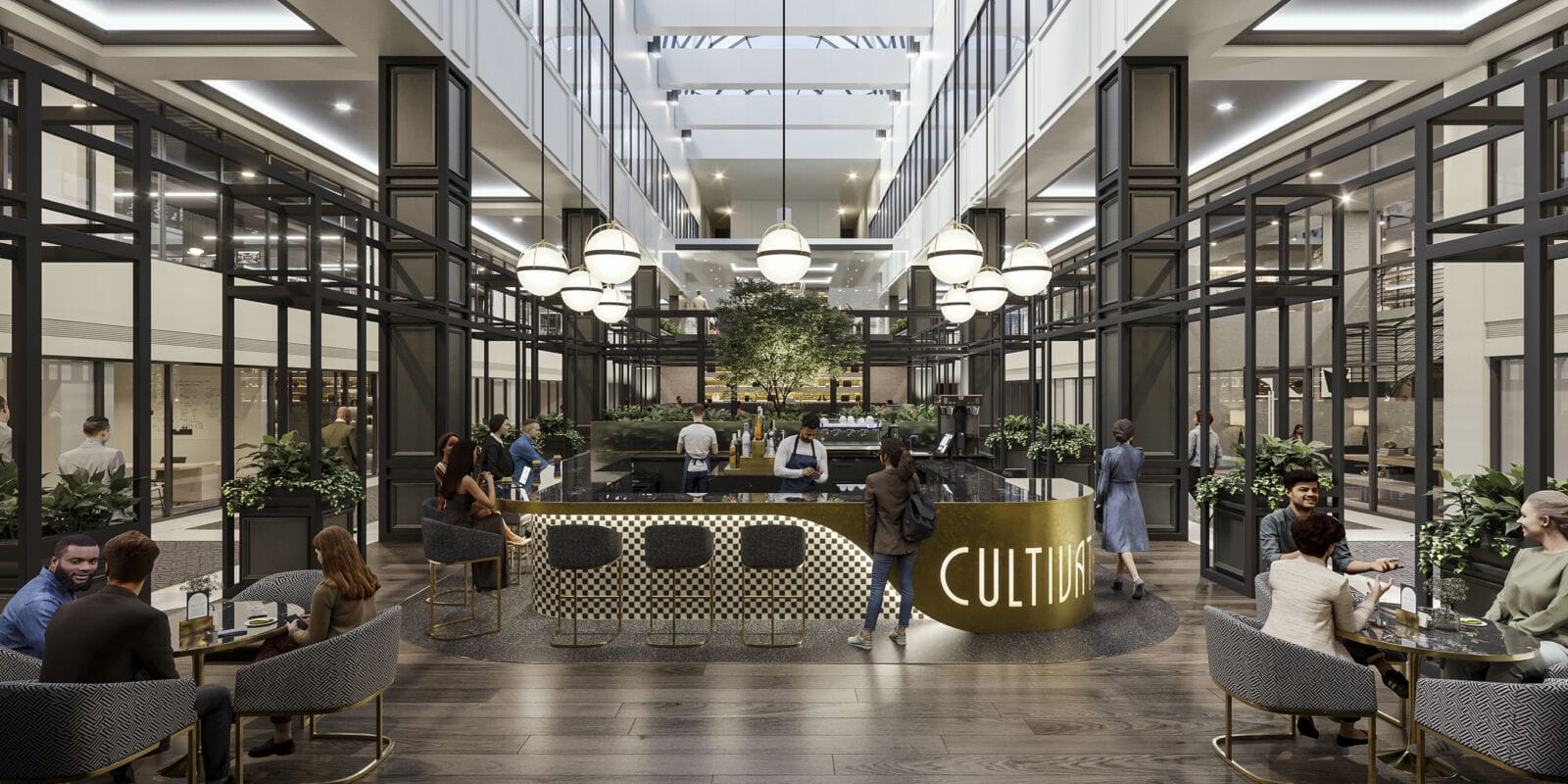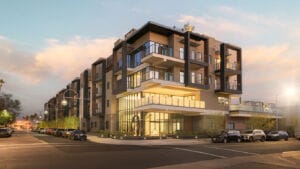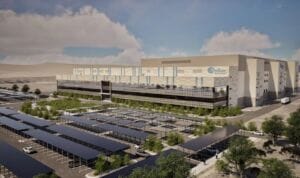Industrial development in Greater Phoenix has seen an impressive growth streak in recent years, with an unprecedented amount of investment coming to the Valley. Other sectors, such as retail and office, have struggled in the post-pandemic landscape, with some product types outperforming others within both segments. As 2024 nears its halfway point, here’s what experts see as bright spots and the state of commercial real estate and the challenges that lie ahead.
LEARN MORE: AZRE Forum will dissect market conditions and market opportunities
MORE NEWS: AZRE’s Most Influential Women in Commercial Real Estate for 2024
“Our [members of Valley Partnership] remain cautiously optimistic,” says Clark Princell, president and CEO of Valley Partnership. “But this is the market I’d choose to be in over anywhere else. We have explosive in migration growth, combined with the thoughtful actions taken by folks post-recession to lay the groundwork for the benefits we’re seeing in our evolving economy that now involves semiconductors, electric vehicle batteries and logistics. Even if there is a national slowdown or downturn, we won’t be impacted the same way as other states.”
From his conversations, Princell says that the industrial growth has slowed, but people seem more optimistic recently than they were four or five months ago. Molly Carson, executive vice president and market leader of the Southwest region for Ryan Companies, agrees that activity has slowed, but was at a frenzied pace not long ago.
“Are we still in the crazy hot streak of that 18-month run? No, and I think that’s great,” she says. “We are getting back to — dare I use the word — normal, and our normal is pretty darn great compared to not only what’s happening nationwide, but also to Phoenix historically. We’re not seeing a dip so much as a plateau.”
During the height of the pandemic, supply chain issues drove up costs and labor shortages lengthened project schedules. Today, Carson says that construction prices have mostly flattened out but still tick up occasionally.
“We’ve gone out for hard bid four times in recent months, and what we’ve seen is more bid coverage and people getting aggressive. When things were so busy, you had to make sure that [companies] had the staff, and right now we’re not seeing that [be a problem],” she continues. “As a developer, I’d always like construction costs to be lower, but it feels like we’re at a good cadence now.”

Submarket performance
The run up in development was fueled by several factors, including a pro-growth regulatory environment in the state, inexpensive capital, available land and strong user demand driven by on-shoring and the need for distribution hubs in the wake of supply chain challenges throughout the pandemic. Cathy Teeter, managing director of advisory and transaction services for CBRE, notes that these were the primary factors in bringing the market to where it is today.
“Some people would say that we may have an oversupply issue in industrial, and a lot of people could argue against that, but industrial has seen massive growth. I believe we’re going to deliver more than 30 million square feet, but a lot of that is pre-leased,” she explains. “It’s also concentrated in two areas of the Valley, namely the far West Valley and the Phoenix-Mesa Gateway area.”
The office sector is a more complicated story. Class A products, such as The Grove at 44th Street and Camelback Road and Bond at 32nd Street and Camelback Road, are driving rent growth along that corridor, Teeter says. Spaces for call centers or other entry-level type work that can be done remotely are still struggling.
“Some of the Class B product, especially in the Southeast Valley, is doing well. There’s robust activity for small spaces and move-in ready spaces,” she continues. “Where executives and higher-level workers live — that space is leasing up.”
Retail, on the other hand, is in a healthier position, with Teeter calling it one of the darlings for investment right now because of the limited supply. Standalone pad retail, especially drive-thru locations, are in high demand.
“Neighborhood centers are largely full, with very little vacancy with that type of product,” Teeter says. “There are really strong malls too, such as Kierland Commons, Scottsdale Quarter and Scottsdale Fashion Square, that are doing well. Others are vacant or have been mothballed and need to be redeveloped.”
Headwinds
While cheap money helped fuel the growth in Phoenix, the current interest rate environment has had a cooling effect on the market. Carson says this had been a roadblock to development, but not necessarily a bad thing in the long run.
“Sometimes you need medicine, even when it doesn’t taste good,” she continues. “But I think we’re about finished with [these elevated rates]. Capital has been tight, it’s hard to stomach the interest rates right now. But in the last 60 days, we’ve seen some loosening. We are working with a couple bigger institutional capital [firms] now after they had essentially taken a holiday since the second half of ‘23.”
Teeter agrees, saying that interest rates have had a “profound impact” on many factors of development. She highlights that there are properties with expiring debt because it had a bridge loan or a construction loan, which will now need to turn into permanent financing.
“Rates have gone up significantly since they purchased or started building the property, so that will create activity,” Teeter says. “It’s going to be interesting to see whether lenders are going to work with borrowers to come up with a solution together, or if they start taking properties back.”
Looking forward, Carson says that the current state of the market is slow compared to the last two year, but notes that “slow and steady wins the race.” She also says that future growth is dependent on informing people about the strength of Arizona’s water portfolio and committing to using more sustainable materials in projects.
“We also need to make sure we’re doing all we can from a heat island standpoint,” Carson continues. “Remaining business friendly and people friendly goes hand in hand. I’m excited for when money gets tired of sitting on the sidelines to housing development coming back in a more meaningful way, specifically multifamily and at a variety of price points.”
Teeter notes that strong user demand will help sustain a healthy environment, even as it takes longer for transactions to get done as people are being more thoughtful about their decisions. She points to the importance of the passing Proposition 479 so the region continues to invest in infrastructure, which “has been one of the main factors in allowing growth to happen.”
“Power availability will be a governor on a lot of projects because of all the manufacturing, data centers and the like that take a lot of power. The climate changes we’re experiencing also impact our power use,” she concludes. “But I will say I would rather be here than pretty much anywhere else in the U.S., just because we have such a diverse economy. We’ve got so many companies from all over the world looking to locate here, and Arizona was never on their list before. We have a great story to tell, so I’m very optimistic.”




